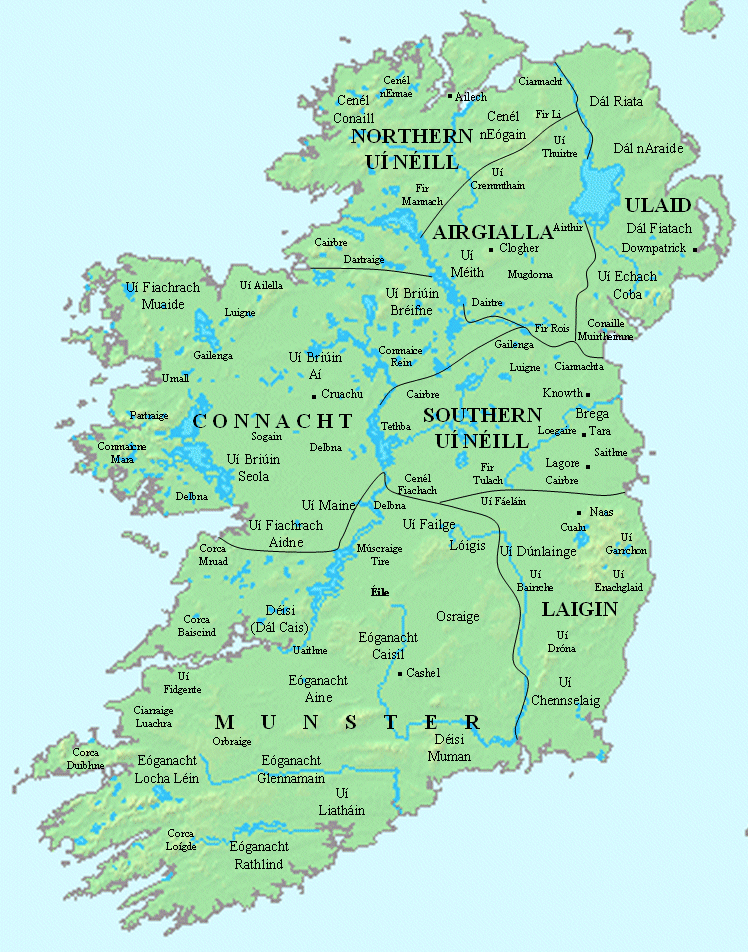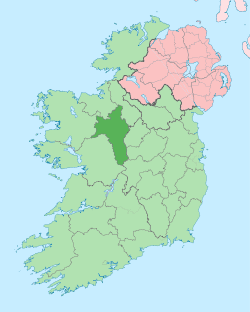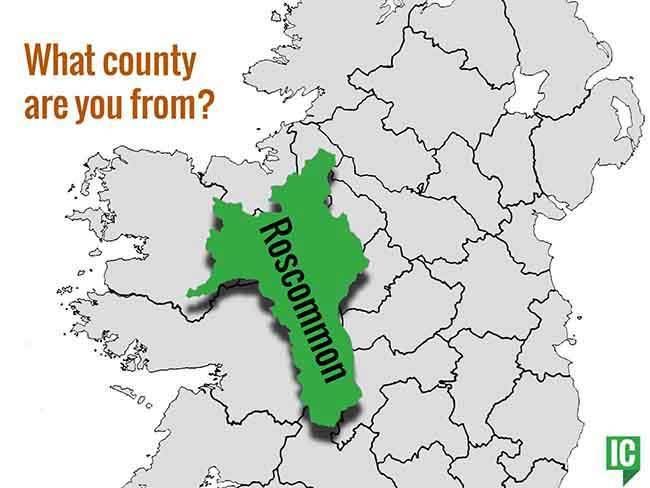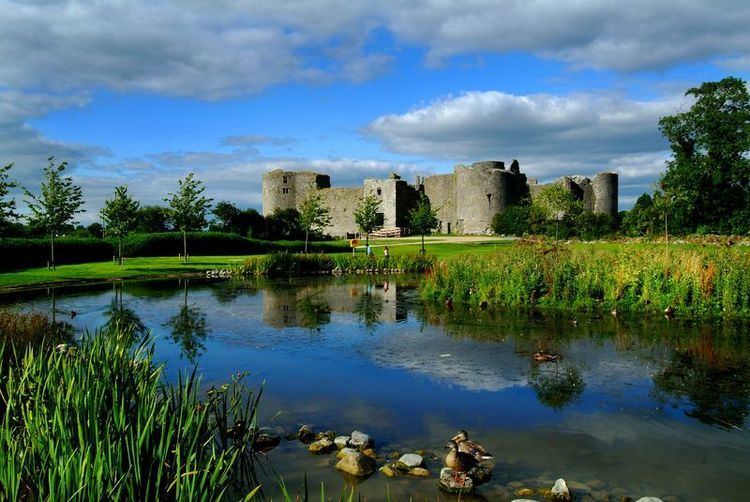Country | Area 2,548 km2 | |
 | ||
Points of interest | ||
Map of County Roscommon
County Roscommon (Irish: Contae Ros Comáin) is a county in the western region of the Republic of Ireland. It is also part of the province of Connacht. It is the 11th largest Irish county by area and 27th most populous. Its county town and largest town is Roscommon. Roscommon County Council is the local authority for the county. The population of the county is 64,436 according to the 2016 census.
Contents
- Map of County Roscommon
- Boyle county roscommon ireland fair day circa 1950
- Farmer dan boyle in the county roscommon
- Etymology
- Geography
- Baronies
- History
- Medieval art
- Ordnance Survey
- Government and politics
- Transportation
- Sport
- People
- References

It is the third largest of Connacht’s five counties by size and fourth largest in terms of population. The county borders every other Connacht county - Galway, Mayo, Sligo and Leitrim, as well as three Leinster counties - Longford, Westmeath and Offaly. In 2008, a news report said that statistically, Roscommon has the longest life expectancy of any county on the island of Ireland.

Boyle county roscommon ireland fair day circa 1950
Farmer dan boyle in the county roscommon
Etymology

County Roscommon is named after the county town of Roscommon. Roscommon comes from the Irish Ros meaning a wooded, gentle height and Comán, the first abbot and bishop of Roscommon who founded the first monastery there in 550 AD.
Geography
Roscommon is the eleventh largest of the 32 counties of Ireland by area and the fifth least-populous county in Ireland. It has an area of 984 square miles. Lough Key in north Roscommon is noted for having thirty-two islands. The geographical centre of Ireland is located on the western shore of Lough Ree in the south of the county.
Seltannasaggart which is located along the northern border with County Leitrim is the tallest point in County Roscommon measuring to a height of 428 m (1,404 ft).
Baronies
There are nine historical baronies in County Roscommon.
North Roscommon
South Roscommon
History
Rathcroghan (Rath Cruachán), near Tulsk, a complex of archaeological sites, the home of Queen Medb (Méadhbh, Maeve), was the seat of Kings of Connacht and then to the High Kings of Ireland. This was the starting point of the Táin Bó Cúailnge, or Cattle Raid of Cooley, an epic tale in Irish mythology.
County Roscommon as an administrative division has its origins in the medieval period. With the conquest and division of the Kingdom of Connacht, those districts in the east retained by King John as "The King's Cantreds" covered County Roscommon, and parts of East Galway. These districts were leased to the native kings of Connacht and eventually became the county. In 1585 during the Tudor re-establishment of counties under the Composition of Connacht, Roscommon was established with the South-west boundary now along the River Suck.
Medieval art
A "well defined" and "original" fine metal workshop was active in county Roscommon in the twelfth century. The 'Cross of Cong', 'the Aghadoe crosier', 'shrine of the Book of Dimma' and the 'shrine of Manchan of Mohill' are grouped together as having been created by Mael Isu Bratain Ui Echach et al., at the same Roscommon workshop. The workshop has been linked to St. Assicus of Elphin.
Ordnance Survey
John O'Donovan (1806–61), historian and scholar, visited County Roscommon in 1837. He was compiling information for the Ordnance Survey. Entering St. Peter's parish in Athlone in June 1837, he wrote 'I have now entered upon ia region totally different from Longford, and am very much pleased with the intelligence of the people'. But he had major problems with place-names. He later wrote, 'I am sick to death's door of lochawns, and it pains me to the very soul to have to make these remarks, but what can I do when I cannot make the usual progress? Here I am stuck in the mud in the middle of Loughs, Turlaghs, Lahaghs and Curraghs, the names of many of which are only known to a few old men in their immediate neighbourhood and I cannot give many of them utterance from the manner in which they are spelled'.
Government and politics
Roscommon is governed locally by the 26 member Roscommon County Council.
For general elections, Roscommon forms part of the three seat Galway-Roscommon constituency.
Transportation
Iarnród Éireann provides Roscommon with passenger and freight rail service. Passenger service to Dublin utilizes Heuston railway station. Athlone railway station is the interchange between Dublin-Galway and Dublin-Westport services.
Sport
Gaelic football is the dominant sport in Roscommon. Roscommon GAA have won 2 All-Ireland Senior Football Championships in 1943 and 1944 and a National Football League Division 1 in 1979 and Division 2 in 2015. Roscommon GAA play home games at Dr. Hyde Park.
Roscommon has less success in hurling, their main hurling title was the 2007 Nicky Rackard Cup.
